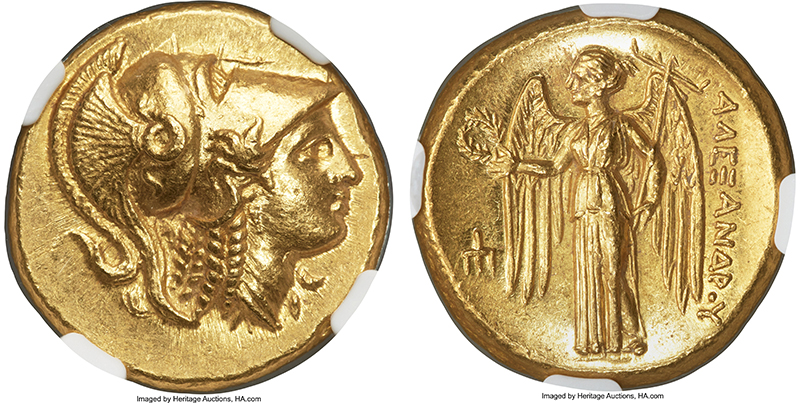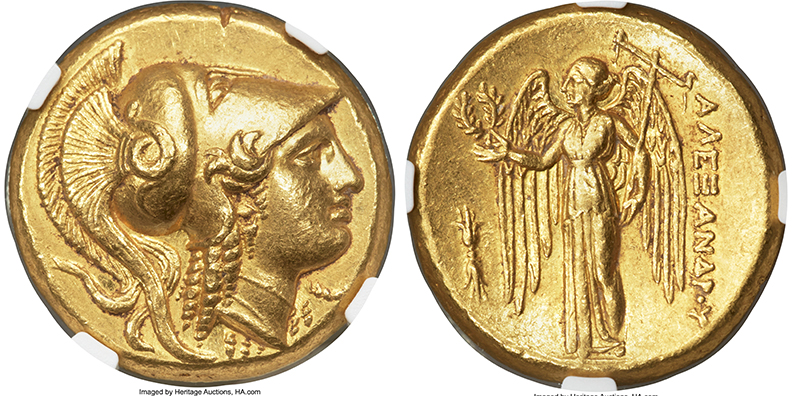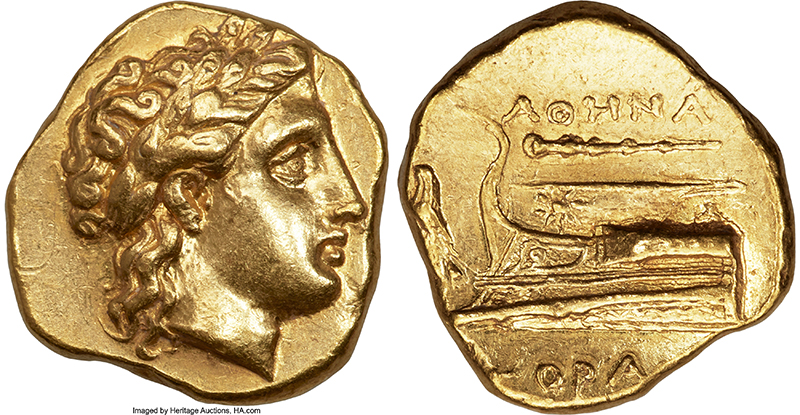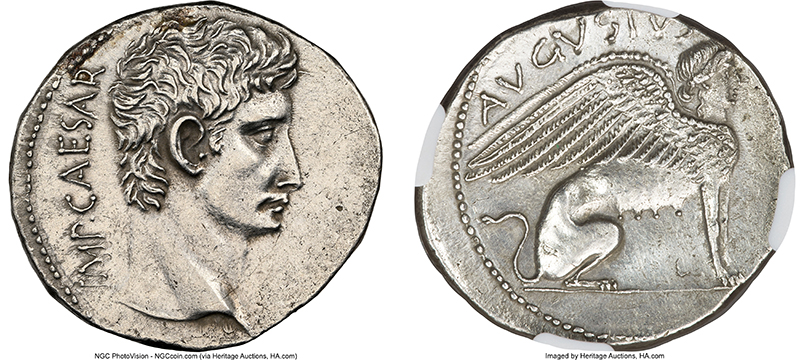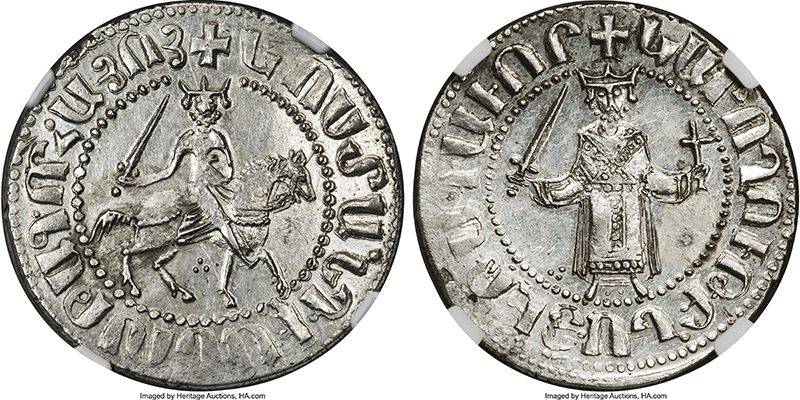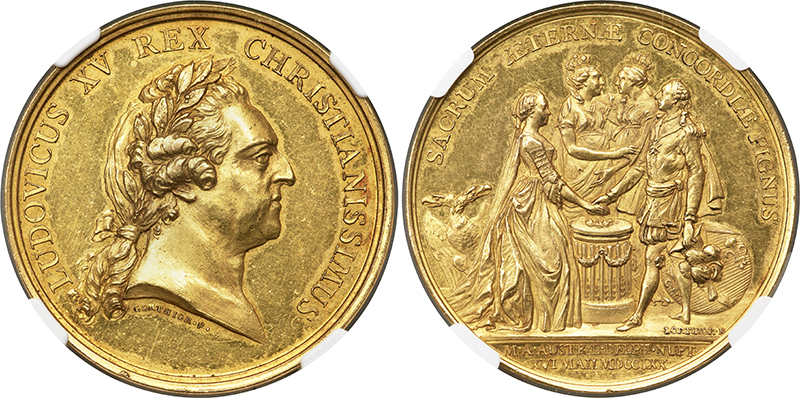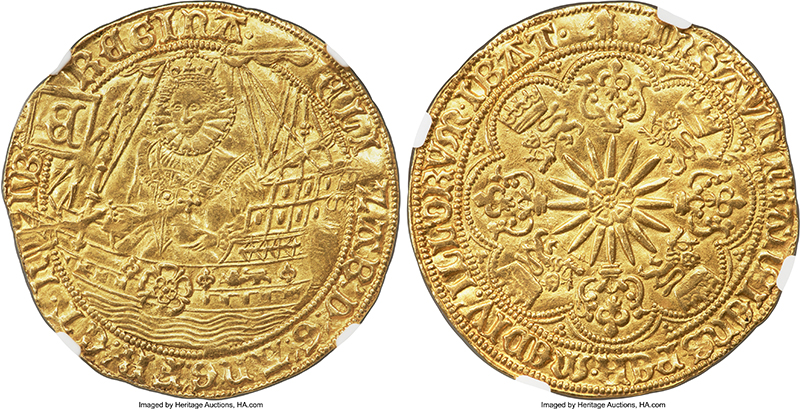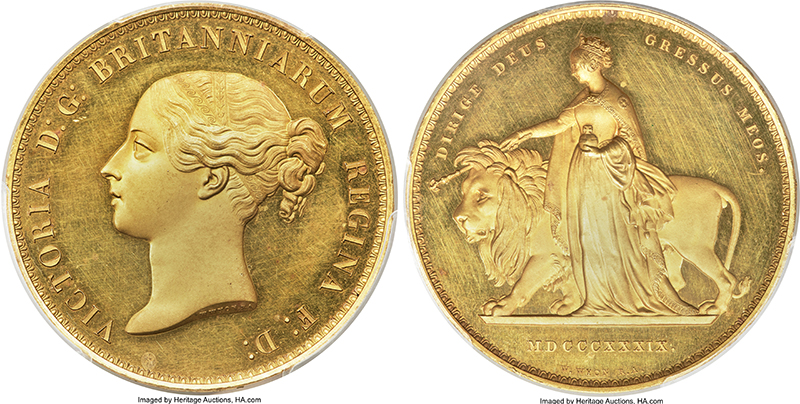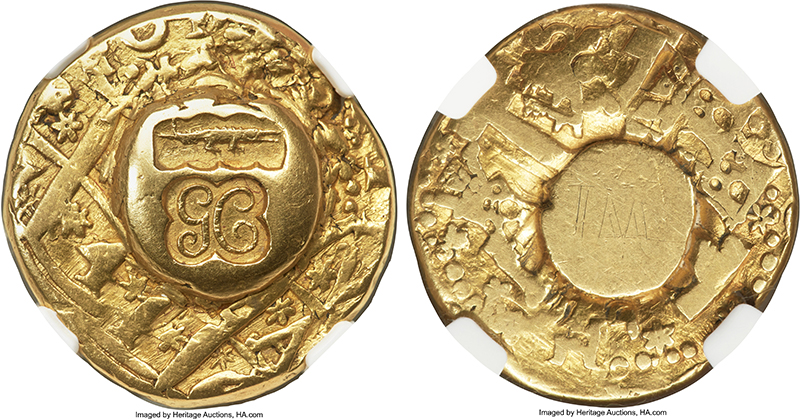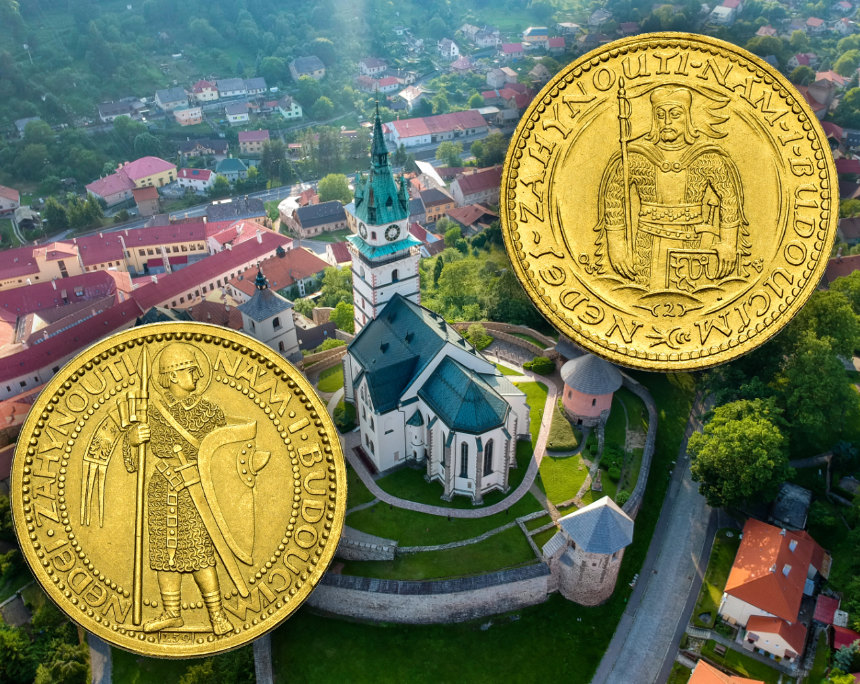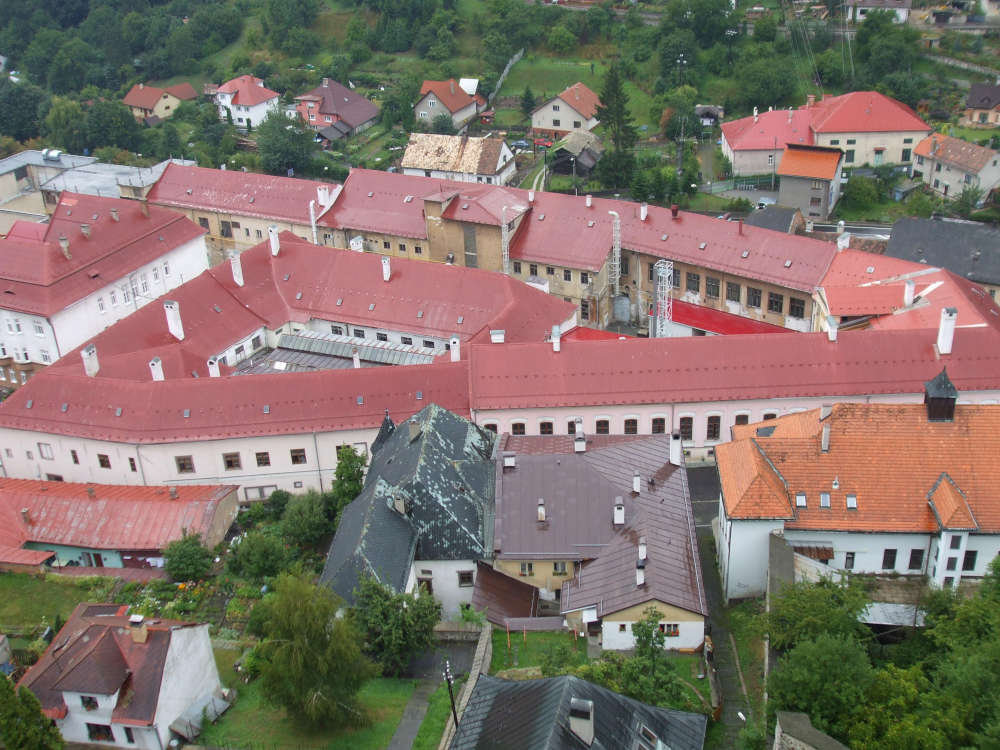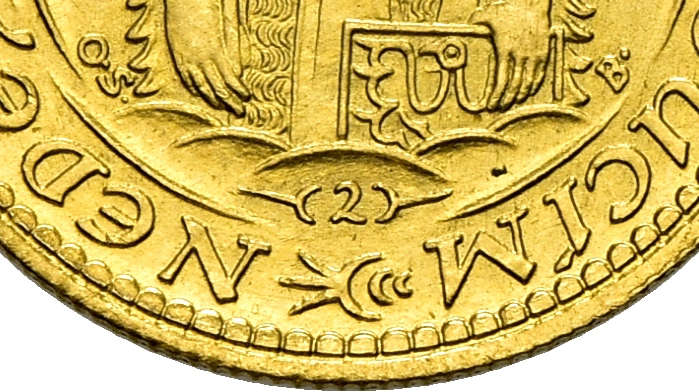The First Years of Czechoslovak Coinage
On 14 May, SINCONA will auction off an impressive collection of Czechoslovak patterns. The offer includes a pattern for the Wenceslas Ducat of which only two specimens exist. Moreover, the sale features the very specimen of the Wenceslas Ducat that President Mazaryk gave to the family of the murdered Finance Minister Rašín.
Content
On 28 October 1918, the new state of Czechoslovakia was proclaimed in Prague. As early as on 25 February 1919, Law No. 84 was passed, stipulating the rules for the transformation of the monetary system. The plan was to create a completely independent Czechoslovak currency – but there were a number of obstacles to overcome first.
The Kremnica Mint in 1920
The young Czechoslovak Republic was fortunate enough to have the oldest mint in Europe, the Kremnica Mint, which had been producing coins in the same location since it was granted the right to mint coins in 1328. However, the facilities were virtually empty. This was because Hungary had to give up Slovakia after the First World War. This meant that Kremnica, which had previously been the most important Hungarian mint, now belonged to Czechoslovakia. The Hungarian authorities therefore decided to move all the machinery and precious metals to Budapest. Even most of the technicians and the administrative staff left Kremnica.

Entry to the Kremnica Mint on a photo of 1961. Photo: cc-by-3.0 / FORTEPAN / Gyöngyi. Coin: Sincona, auction 90 (13-15 May 2024), No. 2010.
Fortunately, Czechoslovakia quickly found an experienced mint master. His name was Dimitrije Petrović. He came from Serbia and was one of the cleverest businessmen ever to head the mint in Vienna. He had gradually taken over the foreign business of the Monnaie de Paris because Vienna – unlike France – had a reputation for delivering excellent quality on time and at a reasonable price. Dimitrije Petrović turned the Vienna Principal Mint into a cash cow, generating substantial profits for the finance department of the Dual Monarchy of Austria-Hungary year by year.
However, after the First World War and the fall of the multi-ethnic Habsburg state, all civil servants who did not originate from the new Austrian state territory were dismissed, including Petrović, who had been born in Vojvodina. For Czechoslovakia, this was a gift from above: they hired the mint master along with other experienced engineers to revive their mint in Kremnica.
Petrović knew Europe’s engineering companies and enjoyed their trust. We know that the Belgian engineering firm Ruskin supplied him with four minting presses as early as in 1921. More presses followed in 1922, manufactured by the German specialist Schuler in Göppingen.
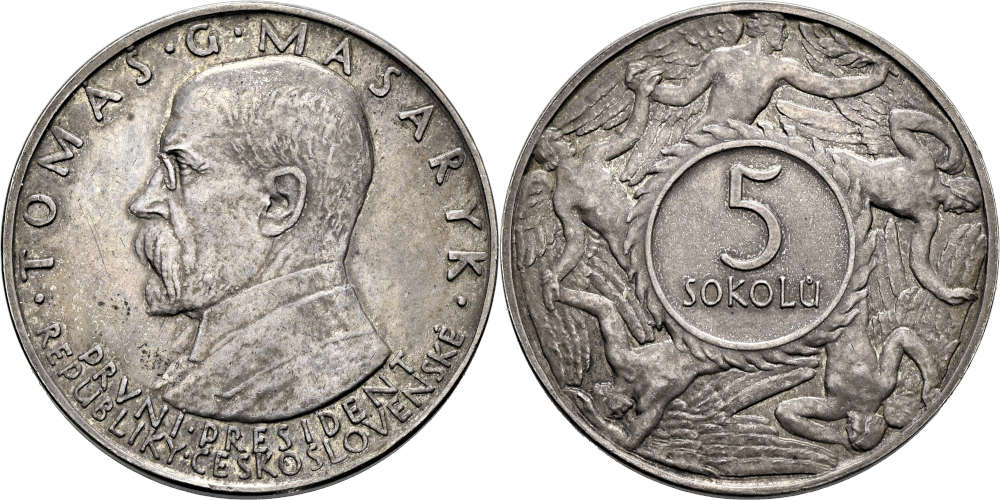
Czechoslovakia. Silver pattern of 5 Sokol, 1920, Kremnica. Dies by Otakar Španiel. Extremely rare. NGC MS62. Estimate: CHF 25,000. From auction 90 (13-15 May 2024), No. 1980.
We do not know which press was used to strike this 1920 silver pattern. The die was designed by Otakar Španiel, a name that we will hear again in another context. Španiel had been professor at the Academy of Fine Arts in Prague since 1919 and worked for the mint on several occasions.
The name of the denomination is particularly noteworthy: Before they settled on ‘Koruna’, other names for the new denomination were discussed. Suggestions included the Franc, inspired by the close ties to France, and the Grivna, the old Russian denomination that had been circulating in the short-lived West Ukrainian People’s Republic since 1918. Our pattern mentions the Sokol as its denomination, the Czech word for falcon. The Czech gymnastics movement of the same name and its Pan-Slavic ideals had paved the way for the Czechoslovak state.

Czechoslovakia. Cupronickel pattern of 20 Halér, 1921, Kremnica. Dies by J. Cejka, J. Reisner. Extremely rare. NGC MS62. Estimate: CHF 5,000. From auction 90 (13-15 May 2024), No. 1986.
As early as in January 1921, the mint started to produce circulation coins. First, 20-Halér pieces were minted. This pattern, which will also be offered in the Sincona auction sale, shows an alternative motif to the design by Otakar Španiel, which was created later and used for the actual circulation coins.
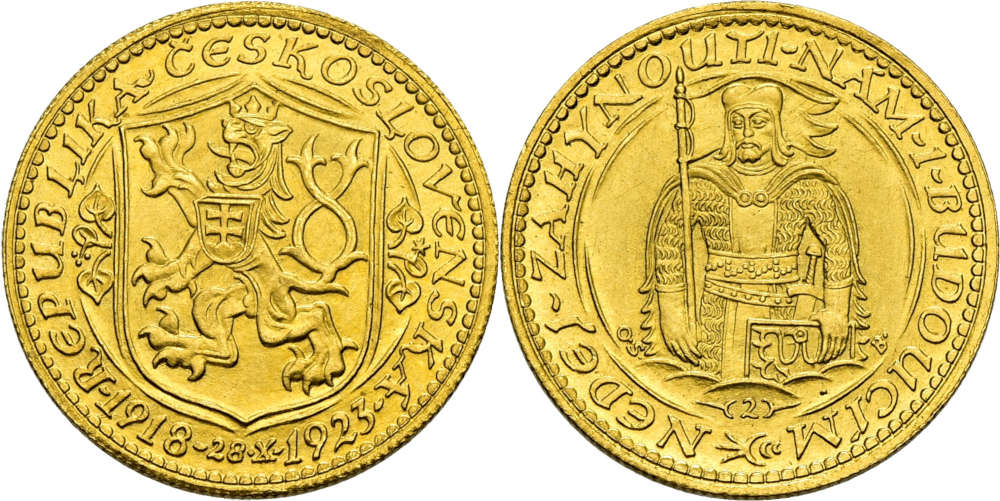
Czechoslovakia. Numbered specimen “2” of the 1923 Ducat, Kremnica. Only 1,000 specimens minted. This specimen was given to the family of the murdered Finance Minister Alois Rašín. NGC MS66. Estimate: CHF 40,000. From auction 90 (13-15 May 2024), No. 1991.
The Wenceslas Ducat for Alois Rašín
It is probably the most remarkable piece in the entire series: the 1923 Wenceslas Ducat with the number 2. The reason for its significance is the fact that we know whom it was awarded to. It can be associated with the Finance Minister Alois Rašín, who is considered the father of the Wenceslas Ducat.
Dimitrije Petrović is also likely to have influenced its creation with his experience. After all, the mint in Vienna had long been issuing gold and silver trading coins. In any way, politicians succeeded in adapting the legal situation with Law No. 62/1923, §4 in such a way that the issue of Wenceslas Ducats became possible. However, the new Ducats were not meant to be used as official means of payment. They were devised as trading coins, i.e., pieces that we would refer to as bullion coins today as they pursued a similar goal: those who wanted to save money for a rainy day in an inflation-proof manner, were to buy Wenceslas Ducats.
The depiction was created by the painter Jaroslav Benda and Otakar Španiel, whom we know already. The image depicts on the obverse the two-tailed Bohemian lion, wearing a small shield with the Slovak coat-of-arms on its chest. The reverse shows a half length portrait of St. Wenceslas with standard and the eagle shield of the Přemyslid dynasty. The artists’ initials can be seen at the bottom to the right and left of the saint.
We cannot only see the initials, but also a small number – in this case a 2. The first 1,000 specimens of these coins were numbered, and some of them given to high dignitaries at a special price of CZK 150.
The first three pieces with the numbers 1, 2 and 3 were purchased by President Mazaryk. He gave number 1 as a gift to the Czechoslovak National Museum in Prague.
Number 2 – and thus the piece we present here – was given to the family of Finance Minister Alois Rašín, who had been murdered on 18 February 1923. This honour was quite appropriate as Rašín’s last official act as Finance Minister, which he virtually carried out on his deathbed, was to approve the final designs for the Wenceslas Ducats.

The commemorative plaque at the former home of Alois Rašín; it also recalls the fact that he was murdered right in front of his own door. Photo: Luděk Kovář, cc-by 3.0.
By the way, we also know who received the other pieces: No. 4 to 24 went to members of the government and the president of the national assembly; No. 25 to 431 to the members of the national assembly; No. 432 to 462 to members of the government and the banking committee. Private individuals could purchase the numbers starting at 463 at a price of CZK 300; even back then there were many avid coin collectors in Czechoslovakia who preferred these special pieces to the “normal” Ducats without a number – although these normal pieces came at a price of “only” CZK 120.

Czechoslovakia. Gold pattern for the 1923 Ducat, Paris. Dies by J. Sejnost. Only 3 specimens minted, only 2 pieces available on the market! NGC PF63 MATTE. Estimate: CHF 100,000. From auction 90 (13-15 May 2024), No. 1988
The Wenceslas Ducat of Josef Šejnost
The finance department launched a competition for the design of the Wenceslas Ducat. Only citizens of the Czechoslovak Republic were allowed to participate. The topic was set with St. Wenceslas. In addition to important artists of the country, the jury included the first chairman of the Czechoslovak Numismatic Society, the well-known numismatist Eduard Fiala. As we know, when presented with the 80 anonymous designs, the jury chose the one created by the successful duo Benda / Španiel. The artists received CZK 20,000. However, another very well-known engraver of the time was disappointed about the result. Josef Šejnost had already specialised in medals and flat relief before the First World War. He considered his own design to be much more attractive and easier to market. Therefore, he wanted to create a private alternative to the official Wenceslas Ducats issued by the state. This is why Josef Šejnost approached the Kremnica Mint with the commission to mint “his” Wenceslas Ducats from his gold.
However, Kremnica refused. So the artist corresponded with the Monnaie de Paris via his wife, who spoke French. The Monnaie de Paris produced 3 gold patterns and 20 bronze patterns for him. Today, only 2 patterns are available on the market because the designs as well as the remaining other gold pattern were donated to the Pelhřim Museum by the artist’s son in the 1970s.
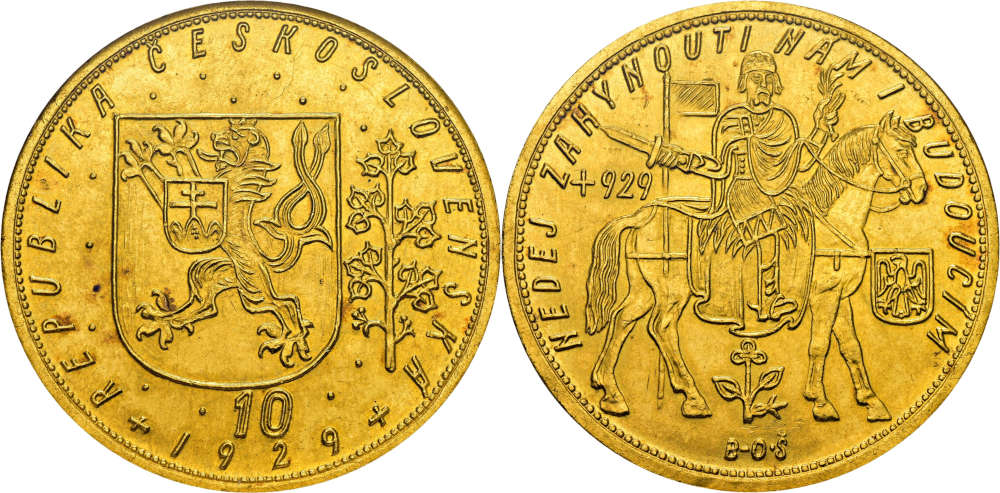
Czechoslovakia. 10 Ducats, 1929, Kremnica. Only 1,327 specimens minted. NGC MS64. Estimate: CHF 20,000. From auction 90 (13-15 May 2024), No. 2010.
1000th Anniversary of the Martyrdom of St. Wenceslas
By the way, St. Wenceslas was not picked as the coin’s theme at random. The young republic used the saint to stage a large and impressive festival on the occasion of the 1000th anniversary of his martyrdom. The entire country had been preparing for the festivities since 1922, and St. Vitus Cathedral in Prague was completed to honour the occasion. Therefore, the Ducat tied in perfectly with the veneration of Saint Wenceslas, just like the 5-fold and 10-fold Ducats issued by Kremnica with the image of St. Wenceslas starting in 1929.
It is very rare to see such an impressive ensemble of early coins and patterns from the first years of the Czechoslovak Republic enter the market. The coins will be auctioned off on the afternoon of 14 May 2024 in Zurich.







